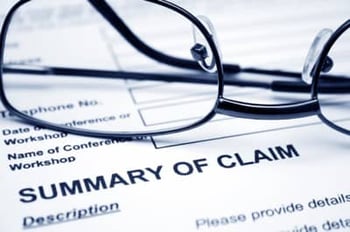Business Income Claims – Mercantile Businesses
 I recently participated in a presentation on this topic at the PLRB Central Regional Conference in Columbus, Ohio. I thought I would share the highlights with those of you who were unable to attend the Conference.
I recently participated in a presentation on this topic at the PLRB Central Regional Conference in Columbus, Ohio. I thought I would share the highlights with those of you who were unable to attend the Conference.
The first question you may be wondering is “what is a mercantile business”. A mercantile business can be any business engaged in the buying and selling of products. These businesses could range from restaurants to department stores to convenience stores. Basically the distinction is that these are not manufacturing businesses which bring their own particular complexities to the business income loss measurement.
The purpose of business income coverage is to put the insured in the same financial position that it would have been in, had no loss occurred, subject to all terms and conditions of the insurance policy. In order to accomplish that purpose we must determine what the business would have earned but for the loss event, beginning with a sales projection.
There are numerous ways to project sales; the best way for each loss depends on the circumstances. With that being said, the documentation and analysis required depends on length of business downtime, the complexity of the situation, and ultimately the type of business. The following are some of the many factors to consider when performing a sales projection:
- Seasonality
- Economic Climate
- Weather
- Competition
- Historical Trends
- Local Events
Expense projections are another vital part of the business loss calculation. Knowing the characteristics of expenses can help you determine continuing versus non-continuing expenses:
- Variable – This expense will change in direct correlation to sales
- Fixed – This expense will remain constant regardless of a change in sales
- Semi-Variable – These expenses contain a fixed and variable component and can fluctuate but not necessarily in conjunction with a sales change
Be careful! Actual expenses reported during the loss period may be skewed by loss affected entries (i.e. property damage costs) or timing differences (i.e. expense incurred before the loss that are paid and booked during the period of restoration).
Lastly, inventory loss claims need to be considered in regards to the business income connection when inventory is valued at selling price:
- The insured is effectively selling the damaged merchandise to the insurance company
- The amount of sales loss is reduced by the retail inventory value
- The business income loss may be eliminated; occurring when the amount of inventory lost is greater than the amount of inventory that would have been sold during the period of restoration
Interested in learning more? Reach out to one of our Insurance Claim professionals here.
Since joining Meaden & Moore in 1999, Christian has focused his career exclusively on servicing the insurance industry and legal profession. His experience includes work on commercial insurance claims and litigation support involving property damage, business interruption, extra expenses, and loss of profits in a variety of industries.










